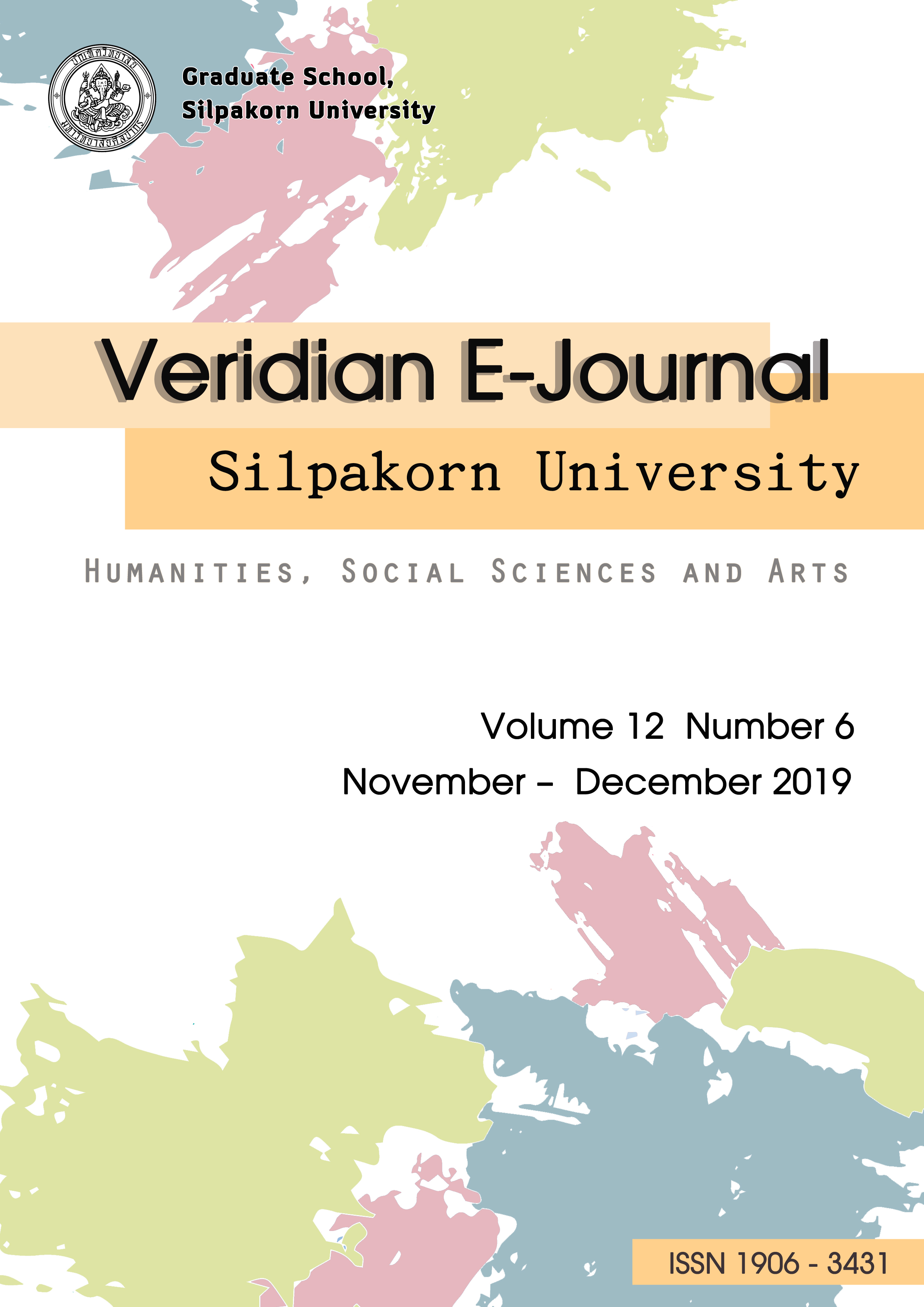ความหวัง จากโลกหายนะในผลงานจิตรกรรม (Hope from Cataclysmic World in Paintings)
Main Article Content
Abstract
หากย้อนกลับไปในอดีต การเกิดภัยพิบัติในต่างแดนเป็นเรื่องยากที่คนต่างพื้นที่จะรับรู้ได้ เนื่องด้วยการสื่อสารยังไม่ก้าวหน้าเช่นปัจจุบัน การกำเนิดของภาพถ่ายและเทคโนโลยีทำให้การส่งสัญญาณเกี่ยวกับภัยพิบัติที่เกิดขึ้นในพื้นที่ต่าง ๆ ได้รับการเผยแพร่ไปทั่วโลก นั่นทำให้เรารับรู้ได้ถึงภัยพิบัติที่เกิดขึ้นอย่างต่อเนื่องและรุนแรงขึ้นทุกที อย่างไรก็ตาม เรื่องราวหายนะจากภัยพิบัติทางธรรมชาติได้ถูกบันทึกไว้ในผลงานจิตรกรรมจำนวนมาก ทั้งจากความเชื่อและคำทำนายเกี่ยวกับวาระสุดท้ายของโลก รวมถึงการสร้างสรรค์งานจากเหตุการณ์จริงในบทความฉบับนี้ ผู้เขียนได้ศึกษาผลงานจิตรกรรมของ เปาโล อุชเชลโล (Paolo Uccello) ปีเอโร ดิ โกซิโม (Piero di Cosimo) ธอมัส โคล (Thomas Cole) และมะนะบุ อิเคดะ (Manabu Ikeda) ด้วยการวิเคราะห์รูปทรงและสัญลักษณ์ที่ปรากฏในภาพ จากการศึกษาพบว่าภาพจิตรกรรมดังกล่าวไม่เพียงแสดงภาพหายนะที่มีความสับสนวุ่นวายและความอันตรายเท่านั้น หากแต่ยังสอดแทรกความหวังและทางรอดจากเหตุการณ์ในภาพเขียนดังกล่าวด้วย
Natural disaster in a country, at past, was difficult to be perceived by foreigners because of undeveloped communication. Presently, the happened disaster is visualized over the world by photo and other developed technologies, so people are able to perceive its continuity and annihilation. The cataclysm from occurrence is also recorded in paintings. Besides, some paintings are inspired by belief and prophecy about the world apocalypse. This article aims to study the works by Paolo Uccello, Thomas Cole, Piero di Cosimo, and Manabu Ikeda. By analyzing the shapes and symbols appeared in their paintings, this article found that chaos and danger of the cataclysm are pictured. Furthermore, hope and salvation are also harmonizingly pictured in the paintings.
